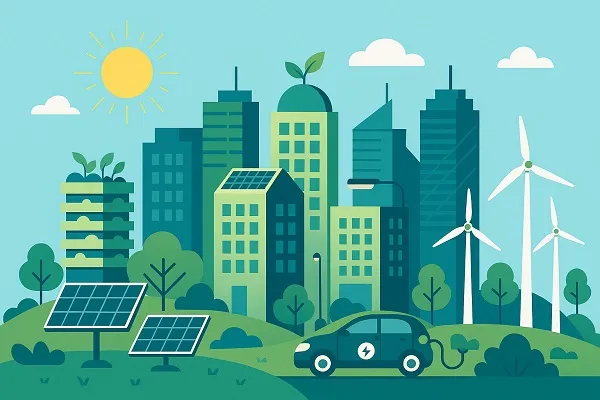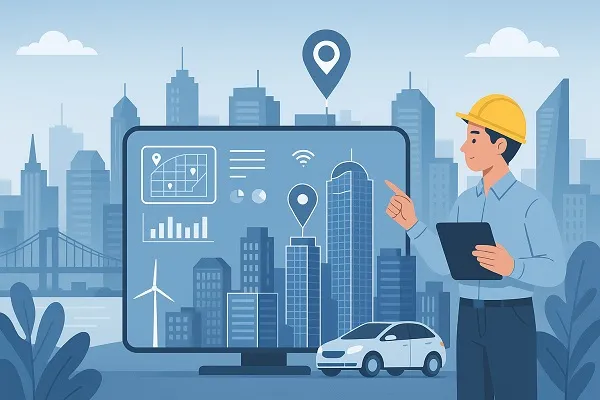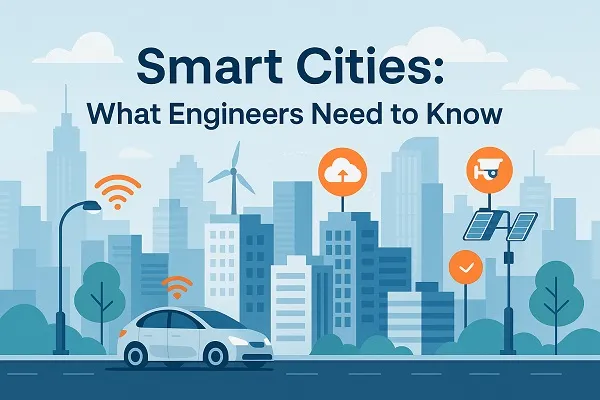Smart Cities represent the next major evolution in how urban environments operate, relying on interconnected systems, sensors, data analytics, and automation to optimize efficiency, safety, and sustainability. For engineers, understanding the technological frameworks, infrastructure requirements, and integration challenges of Smart Cities is essential to driving innovation and ensuring seamless functionality.
The Engineering Backbone of Smart Cities
Engineers are central to every layer of Smart City development. From civil and electrical engineering to data and network engineering, each discipline contributes to creating intelligent, adaptive systems that enhance urban living.
Key Engineering Disciplines Involved
- Civil Engineers: Design and implement resilient infrastructures that can integrate smart sensors, energy systems, and IoT components.
- Electrical Engineers: Develop advanced power grids and renewable energy systems to support sustainable, continuous operation.
- Software Engineers: Build platforms for data integration, AI-driven analytics, and cloud-based city management.
- Systems Engineers: Ensure interoperability between complex systems like transport, energy, and communication networks.
Smart Cities depend on cross-disciplinary collaboration, where engineers must merge technical precision with digital innovation.
Data-Driven Infrastructure and Connectivity
The foundation of a Smart City lies in its ability to gather, analyze, and act upon real-time data. Engineers play a critical role in designing the networks and infrastructure that enable this level of connectivity.
Essential Components
- IoT Networks: Smart sensors in transportation, energy grids, and waste systems collect data to drive decision-making.
- Edge Computing: Localized data processing reduces latency and improves response times for mission-critical applications.
- 5G Integration: Engineers must design systems compatible with high-speed networks to support autonomous vehicles, remote healthcare, and intelligent utilities.
Data interoperability and cybersecurity must be engineered into every layer to ensure reliable performance and protection against breaches.
Sustainable Urban Systems and Smart Energy

Smart Cities are built to promote sustainability and reduce environmental impact. Engineers must develop systems that efficiently manage resources while minimizing waste and emissions.
Focus Areas for Engineers
- Smart Grids: Adaptive electrical grids that balance supply and demand using AI and real-time analytics.
- Renewable Integration: Systems that coordinate solar, wind, and hydro energy sources for consistent power delivery.
- Water Management: Intelligent monitoring systems that detect leaks, track usage, and optimize distribution.
Implementing sustainability-focused solutions requires both innovation and compliance with environmental regulations and standards.
Intelligent Transportation and Mobility Solutions
Transportation is one of the most visible expressions of Smart City engineering. Engineers are transforming how people and goods move through cities using automation, data, and design.
Engineering Innovations
- Connected Traffic Systems: Smart traffic lights and sensors adjust patterns based on congestion data.
- Autonomous Transit: Engineers develop the infrastructure for self-driving buses, shuttles, and cars.
- Multimodal Hubs: Integration of bicycles, electric vehicles, and public transit systems for efficiency and accessibility.
Reducing congestion, emissions, and travel time depends on intelligent coordination between physical design and digital control systems.
Smart Building Systems and Infrastructure Integration
Smart buildings form the structural core of Smart Cities. Engineers are tasked with integrating sensors, automation, and analytics into building systems for optimal efficiency.
Key Engineering Considerations
- Building Automation Systems (BAS): Control lighting, HVAC, and security for energy efficiency and comfort.
- Energy Monitoring: Engineers implement real-time metering and predictive maintenance to reduce energy waste.
- Material Science Innovations: Use of self-healing materials and energy-efficient insulation to extend building lifecycles.
The convergence of building systems and city networks enables large-scale energy management and sustainability performance tracking.
Urban Planning and Digital Twin Technology

Digital twin models allow engineers to simulate entire city systems virtually, testing various scenarios before physical implementation. This data-centric approach enhances urban planning accuracy.
Benefits of Digital Twins for Engineers
- Real-time monitoring and predictive analysis for infrastructure performance.
- Simulation of traffic, pollution, and energy usage for strategic planning.
- Integration with AI for automated optimization and emergency management.
Engineers leveraging digital twin technology gain a comprehensive understanding of city systems, allowing for more precise design and maintenance strategies.
Challenges Engineers Must Address
Designing Smart Cities introduces unique challenges that engineers must navigate to ensure efficiency and security.
Primary Challenges
- Interoperability: Ensuring all systems communicate effectively across vendors and protocols.
- Data Security: Protecting sensitive infrastructure and citizen data from cyber threats.
- Scalability: Engineering flexible frameworks that can expand with urban growth.
- Ethical Considerations: Designing systems that respect privacy while maximizing functionality.
Each challenge demands a multidisciplinary engineering response that balances innovation with accountability.
Engineering Collaboration and Policy Alignment
Smart City engineering extends beyond technical design. It requires close coordination with policymakers, architects, and urban planners. Engineers must understand local regulations, sustainability goals, and community needs to create balanced solutions.
Collaboration Priorities
- Working with municipalities to establish standardized communication frameworks.
- Aligning technical implementations with long-term sustainability strategies.
- Ensuring public engagement through transparent engineering processes.
Strong collaboration ensures that Smart City infrastructure remains adaptive, inclusive, and future-ready.
Building Smart Cities requires engineers to apply advanced technical knowledge with a deep understanding of urban systems, sustainability, and data intelligence. Engineers who embrace innovation, design resilience, and prioritize interoperability will be at the forefront of transforming cities into smarter, more connected environments that truly enhance urban living.
Content reviewed and published by Tier2Tek Staffing Editorial Team .

